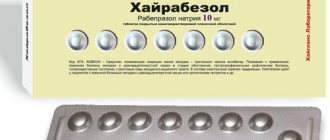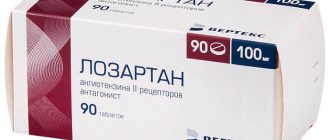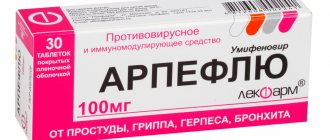Zinnat®
Pills
The standard course of therapy is 7 days (can vary from 5 to 10 days). For optimal absorption, the drug should be taken after meals.
Adults
| Indications | Dose (tablets and oral suspension) |
| Most infections | 250 mg 2 times/day |
| Urinary tract infections | 125 mg 2 times/day |
| Mild to moderate lower respiratory tract infections, such as bronchitis | 250 mg 2 times/day |
| More severe lower respiratory tract infections or if pneumonia is suspected | 500 mg 2 times/day |
| Pyelonephritis | 250 mg 2 times/day |
| Uncomplicated gonorrhea | 1 g once |
| Borreliosis (Lyme disease) in adults and children over 12 years of age | 500 mg 2 times/day for 20 days |
Children from 3 years old
| Most infections | 125 mg (1 tablet of 125 mg) 2 times/day. Maximum daily dose - 250 mg |
| Otitis media or more severe infections | 250 mg (1 tablet of 250 mg or 2 tablets of 125 mg) 2 times a day. Maximum daily dose - 500 mg |
Oral suspension
The drug Zinnat® in the form of an oral suspension is recommended for use in children from 3 months
. There is no experience with the use of Zinnat® in children under 3 months of age.
If a fixed dose is preferred, then for most infections it is recommended to take 125 mg 2 times a day. Children aged 2 years and older
for
otitis media or more severe infections,
prescribe 250 mg 2 times a day; the maximum daily dose is 500 mg.
When treating infants and children, it may be necessary to calculate the dose depending on body weight and age. For most infections
the dose for
infants and children aged 3 months to 12 years
is 10 mg/kg 2 times a day, but not more than 250 mg/day.
For otitis media and more severe infections,
the recommended dose is 15 mg/kg 2 times a day, but not more than 500 mg/day.
The following tables show doses depending on the age and body weight of the child for dosing Zinnat® suspension 125 mg/5 ml in 5 ml measuring spoons included in the package.
Dose of 10 mg/kg body weight prescribed for most infections
| Age | Body Weight (kg) (approx.) | Single dose (mg) when taken 2 times a day | Number of scoops (5 ml) per dose |
| 3-6 months | 4-6 | 40-60 | 1/2 |
| 6 months-2 years | 6-12 | 60-120 | 1/2-1 |
| 2-12 years | from 12 and over 20 | 125 | 1 |
Dose of 15 mg/kg body weight prescribed for otitis media and more severe infections
| Age | Body Weight(kg)(approx.) | Single dose (mg) based on body weight | Number of scoops (5 ml) per dose |
| 3-6 months | 4-6 | 60-90 | 1/2 |
| 6 months-2 years | 6-12 | 90-180 | 1-1.5 |
| 2-12 years | from 12 and over 20 | 180-250 | 1.5-2 |
Step therapy
Cefuroxime is also available as a sodium salt (Zinacef®) for parenteral administration, which allows the same antibiotic to be prescribed sequentially when switching from parenteral to oral therapy is necessary. The drug Zinnat® is effective after parenteral use of the drug Zinacef® for the treatment of pneumonia and exacerbation of chronic bronchitis.
The duration of parenteral and oral courses of treatment is determined by the severity of the infection and the clinical picture.
Pneumonia
The drug Zinacef® (cefuroxime in the form of sodium salt) at a dose of 1.5 g 2-3 times a day (IV or IM) for 48-72 hours, then the drug Zinnat® (cefuroxime axetil) orally at a dose of 500 mg 2 times/day for 7-10 days.
Exacerbation of chronic bronchitis
The drug Zinacef® (cefuroxime in the form of sodium salt) at a dose of 750 mg 2-3 times a day (IV or IM) for 48-72 hours, then a course of treatment with Zinnat® (cefuroxime axetil) orally at a dose 500 mg 2 times/day for 5-10 days.
Pharmacological properties of the drug Zinnat™
Pharmacodynamics . Cefuroxime axetil (cefuroxime 1-acetoaxetyl ester) is an oral form of the cephalosporin antibiotic cefuroxime. It is bactericidal, resistant to most β-lactamases, and active against a wide range of gram-positive and gram-negative microorganisms. The bactericidal effect of cefuroxime is due to inhibition of the synthesis of the cell membrane of microorganisms. Cefuroxime is highly active against the following microorganisms: gram-negative aerobes: Haemophilus influenzae (including ampicillin-resistant strains), Haemophilus parainfluenzae, Moraxella (Branhamella) catarrhalis, Neisseria gonorrhoeae (including penicillinase-producing and non-penicillinase-producing strains), Escherichia coli, Klebsiella spp ., Proteus mirabilis, Providencia spp., Proteus rettgeri; gram-positive aerobes: Staphylococcus aureus and Staphyloccocus epidermidis (including penicillinase-producing strains, but excluding methicillin-resistant strains), Streptococcus pyogenes (and other β-hemolytic streptococci), Streptococcus pneumoniae, group B Streptococcus (Streptococcus agalactiae); anaerobes: gram-positive and gram-negative cocci (including Peptococcus and Peptostreptococcus spp. ), gram-positive bacteria (including Clostridium ) and gram-negative bacteria (including Bacteroides and Fusobacterium spp.), Propionibacterium spp.; other microorganisms: Borrelia burgdorferi ; microorganisms resistant to cefuroxime: Clostridium difficile, Pseudomonas spp., Campylobacter spp., Acinetobacter calcoaceticus, Listeria monocytogenes , methicillin-resistant strains of Staphylococcus aureus and Staphylococcus epidermidis, Legionella spp. ; microorganisms, some strains of which are resistant to cefuroxime: Enterococcus (Streptococcus) faecalis, Morganella morganii, Proteus vulgaris, Enterobacter spp., Citrobacter spp., Serratia spp., Bacteroides fragilis. Pharmacokinetics . After oral administration of cefuroxime, axetil is absorbed in the intestine, hydrolyzed in its mucous membrane and enters the systemic circulation as cefuroxime. The optimal level of absorption is observed when taken immediately after a meal. The maximum concentration of cefuroxime in the blood plasma is observed approximately 2-3 hours after taking the drug. The half-life is approximately 1–1.5 hours. The degree of binding to plasma proteins is 33–55%, depending on the determination method. Cefuroxime is excreted unchanged by the kidneys by tubular secretion and glomerular filtration. Concomitant use of probenecid increases AUC by 50%. Plasma levels of cefuroxime decrease during dialysis.
Compound
active ingredient:
cefuroxime;
1 tablet contains cefuroxime (in the form of cefuroxime axetil) 125 mg, 250 mg or 500 mg;
Excipients:
microcrystalline cellulose, croscarmellose sodium (type A), sodium lauryl sulfate, hydrogenated vegetable oil, colloidal anhydrous silicon dioxide, hypromellose, propylene glycol, methyl parahydroxybenzoate (E 218), propyl parahydroxybenzoate (E 216), Opaspray white M-1-7120J (contains sodium benzoate (E 211)).
Side effects of the drug Zinnat™
When using cefuroxime axetil, side effects are moderate and are mostly reversible. The following side effects are classified by organs and systems and by frequency of occurrence: very often (≥1/10); often (≥1/100 and ≤1/10); uncommon (≥1/1000 and ≤1/100); rare (≥1/10,000 and ≤1/1000); very rare (≤1/10,000). Infections and infestations Often - overgrowth of Candida . From the blood and lymphatic system Often - eosinophilia. Uncommon: positive Coombs test, thrombocytopenia, leukopenia (sometimes severe). Very rarely - hemolytic anemia. Cephalosporins as a class have the property of being absorbed on the surface of the red blood cell membrane and interacting with antibodies, which can lead to a positive Coombs test (impact on the determination of blood compatibility) and (very rarely) to hemolytic anemia. Immune system Hypersensitivity reactions, including: uncommon - skin rash; rarely - urticaria, itching; very rarely - drug fever, serum sickness, anaphylaxis. From the side of the central nervous system : Often - headache, dizziness. From the gastrointestinal tract Often - gastroenterological disorders, including diarrhea, nausea, abdominal pain. Uncommon: vomiting. Rarely - pseudomembranous colitis. From the hepatobiliary system Often - a transient increase in the level of liver enzymes (ALAT, AST, LDH). Very rarely - jaundice (mostly cholestatic), hepatitis. From the skin and subcutaneous tissues Very rarely - erythema multiforme, Stevens-Johnson syndrome, toxic epidermal necrolysis (exanthematous necrolysis).
Basic physical and chemical properties
tablets, film-coated, biconvex, capsule-shaped, white or almost white; marked “GX ES5” on one side for 125 mg tablets;
tablets, film-coated, biconvex, capsule-shaped, white or almost white; marked “GX ES7” on one side for 250 mg tablets;
tablets, film-coated, biconvex, capsule-shaped, white or almost white; marked “GX EG2” on one side for 500 mg tablets;
Special instructions for the use of Zinnat™
The drug is prescribed with extreme caution to patients with a history of allergic reactions to penicillins or other β-lactam antibiotics. The use of cefuroxime axetil (as well as other antibiotics) can lead to overgrowth of Candida . Long-term use may also lead to overgrowth of other nonsusceptible microorganisms (eg, Enterococci, Clostridium difficile ), which may require discontinuation of treatment. When using broad-spectrum antibiotics, pseudomembranous colitis may develop. This should be taken into account if patients experience severe diarrhea during or after treatment. The composition of the drug in the form of a suspension includes sucrose, which must be taken into account when prescribing the drug to patients with diabetes mellitus. The suspension also contains aspartame, which is a source of phenylalanine, so this form of the drug is used with caution to treat patients with phenylketonuria. During treatment with Zinnat in patients with Lyme disease, the development of the Yarisch-Gersheimer reaction is possible. This reaction occurred directly as a result of the bactericidal effect of Zinnat on the microorganism that causes Lyme disease, the spirochete Borrelia burgdorferi. It is necessary to explain to patients that this is a common consequence of antibiotic therapy for Lyme disease and does not require special therapy. When carrying out sequential therapy, the time of transition from parenteral administration of the drug to oral administration is determined by the severity of the infection, the clinical condition of the patient and the sensitivity of the infectious agent. If there is no clinical improvement within 72 hours, parenteral therapy should be continued. During pregnancy and breastfeeding . There is no experimental data on the embryotoxic or teratogenic effects of cefuroxime axetil, but it should be prescribed with caution in the first months of pregnancy. Cefuroxime is excreted in breast milk, so the drug is used with caution during breastfeeding. Children . There is no experience with the use of Zinnat for the treatment of children under 3 months of age. Impact on the ability to drive vehicles and operate machinery . Since the drug may cause dizziness, the patient should be warned that driving vehicles and operating machinery should be done with caution.
Indications for use of the drug Zinnat™
Infections caused by microorganisms sensitive to the drug:
- ENT organs (otitis media, sinusitis, tonsillitis, pharyngitis);
- lower respiratory tract (pneumonia, acute bronchitis and exacerbation of chronic bronchitis);
- urinary system (pyelonephritis, cystitis and urethritis);
- skin and soft tissues (furunculosis, pyoderma and impetigo);
- gonorrhea, acute uncomplicated gonococcal urethritis and cervicitis;
- early manifestations of Lyme disease and subsequent prevention of late manifestations of Lyme disease in adults and children over the age of 12 years.
Drug interactions Zinnat™
Drugs that reduce gastric acidity may reduce the bioavailability of Zinnat and minimize the effect of accelerating absorption after meals. Like other antibiotics, Zinnat can affect intestinal flora, which leads to decreased estrogen reabsorption and decreased effectiveness of combined oral contraceptives. Since the ferrocyanide test may produce a false-positive result, it is recommended to use the glucose oxidase or hexokinase technique to determine blood glucose levels in patients receiving cefuroxime sodium therapy. Cefuroxime does not affect the results of the alkaline picrate method for determining creatinine levels.



